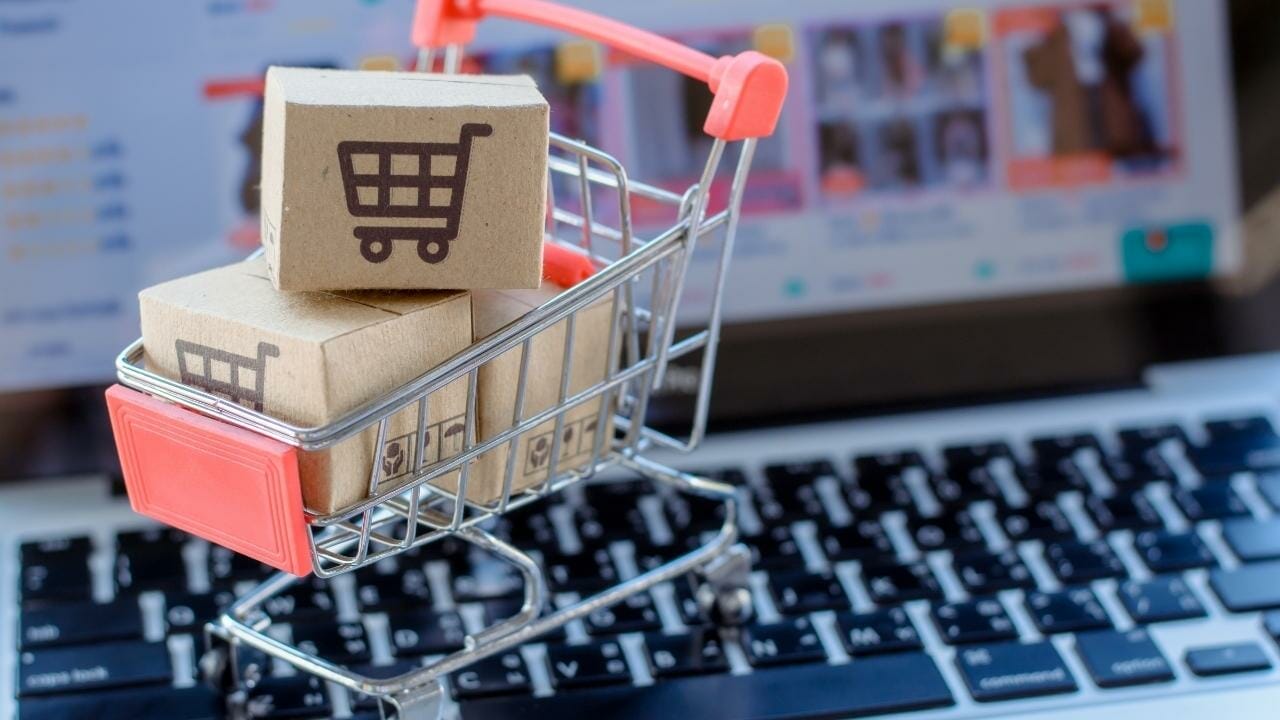
In a world where time and efficiency are valued above all else, Amazon FBA stands as a symbol of streamlined product sales and delivery. This innovative program allows sellers to tap into the power of Amazon’s vast network, making their products Prime Eligible and ensuring fast and reliable shipping.
With Amazon handling customer service and fulfillment, sellers are free to focus on what they do best. Join us as we explore the ins and outs of Amazon FBA and discover how it can revolutionize your business.
Key Takeaways
- Amazon FBA streamlines product sales and delivery
- FBA makes products Prime Eligible
- Inventory is sent to Amazon Fulfillment Centers
- Amazon handles customer service for FBA orders
The Basics of Amazon FBA
Amazon FBA streamlines product sales and delivery. Sellers can make their products Prime Eligible, send inventory to Amazon Fulfillment Centers, and have Amazon handle customer service for FBA orders.
This program offers numerous benefits for sellers. Prime Eligibility increases visibility and trust among customers. Utilizing Amazon Fulfillment Centers saves time and resources by not having to fulfill orders in-house. Amazon also takes care of customer service for FBA orders, allowing sellers to focus on other aspects of their business.

To participate in Amazon FBA, sellers must meet certain requirements. This includes having a Pro Amazon Seller Account through Seller Central.
Understanding Amazon FBA Fees
The fees for utilizing the Amazon FBA program range from $0.30 per label to 10-17% referral fees based on the category. Understanding the Amazon FBA fee breakdown is crucial for sellers looking to calculate their Amazon FBA costs accurately.
The selling plan fee is a flat $49.99, while referral fees vary depending on the product category. Additionally, there is a stickering and labeling fee of $0.30 per label.
Fulfillment fees and storage fees also apply, which can be estimated using the Amazon FBA Calculator. By comprehensively analyzing these fees, sellers can make informed decisions about their pricing strategy and overall profitability.

Calculating Amazon FBA costs is essential for sellers who desire freedom in their business and want to optimize their revenue potential on the platform.
Harnessing the Benefits of Amazon FBA
Sellers can maximize their efficiency and increase customer satisfaction by utilizing the benefits of the FBA program. Here are three key advantages of Amazon FBA:
-
Prime Eligibility: By using FBA, sellers can make their products eligible for Prime. This not only increases the visibility of their products but also provides customers with fast and free shipping, which leads to higher customer satisfaction.
-
Outsourced Customer Service: Amazon handles customer service for FBA orders. This means sellers can focus on other aspects of their business while Amazon takes care of any customer inquiries or issues. This streamlined process ensures prompt and efficient resolution, resulting in happier customers.

-
Revenue Boost: FBA can drive significant revenue for sellers. With Prime Eligibility and excellent customer service, sellers can attract more customers and increase sales. Additionally, FBA products often have higher conversion rates, leading to increased profitability.
Exploring Amazon FBA Small & Light
By enrolling in the FBA Small & Light program, sellers can take advantage of fast and free shipping for their small and lightweight products, providing customers with a convenient shopping experience. This program enables sellers to offer the Prime badge next to their listings, solving the Amazon add-on item problem.
With products qualifying for 3-5 business day shipping, sellers can still benefit from the Prime badge, which is highly valued by customers. Amazon FBA Small & Light is a great option for sellers looking to improve FBA efficiency, as it streamlines the fulfillment process for small and lightweight items. By utilizing this program, sellers can optimize their operations, ensuring fast and reliable delivery while reducing costs.
With FBA Small & Light, sellers can focus on growing their business while Amazon takes care of the logistics, providing them with the freedom to expand and succeed.

Optimizing Amazon FBA for Sales and Returns
To optimize their Amazon FBA experience, sellers can focus on increasing customer reviews and feedback, driving external traffic to their product listings, and minimizing returns and negative feedback. This is crucial for improving customer satisfaction and increasing product visibility.
Here are three key strategies sellers can implement:
- Encourage Customer Reviews and Feedback:
- Request reviews from satisfied customers.
- Use automated email campaigns to follow up with customers and ask for feedback.
- Respond promptly to customer inquiries and concerns.
- Drive External Traffic to Product Listings:
- Utilize social media platforms and online advertising to attract potential customers.
- Collaborate with influencers or bloggers to promote products.
- Optimize product listings for relevant keywords to improve search rankings.
- Minimize Returns and Negative Feedback:
- Provide accurate product descriptions and images to set realistic customer expectations.
- Offer excellent customer service to address any issues promptly.
- Implement quality control measures to ensure product quality and minimize defects.
Maximizing Amazon Reviews and Feedback
Maximizing customer reviews and feedback is essential for sellers looking to optimize their Amazon FBA experience. By increasing customer satisfaction and leveraging customer testimonials, sellers can build trust and credibility, ultimately driving more sales.
Analyzing customer reviews and feedback data can provide valuable insights into product performance and areas for improvement. Sellers can use this data to make informed decisions and enhance their products and services.

Positive customer reviews and testimonials can also serve as powerful marketing tools, attracting new customers and boosting conversions. It is crucial for sellers to actively encourage and incentivize customers to leave reviews and provide feedback, as this not only enhances the seller’s reputation but also helps potential buyers make informed purchasing decisions.
Driving External Traffic to Amazon Listings
Utilizing various marketing strategies and channels, sellers can attract external traffic to their Amazon listings, expanding their reach and increasing the visibility of their products. Here are three effective ways to drive external traffic and build brand awareness for Amazon listings:
-
Utilize social media: Social media platforms like Facebook, Instagram, and Twitter offer a wide range of targeting options and ad formats that can help sellers reach their target audience. By creating engaging content and running targeted ads, sellers can drive traffic to their Amazon listings and generate sales.
-
Collaborate with influencers: Influencer marketing has become increasingly popular in recent years. By partnering with influencers in their niche, sellers can leverage their audience and influence to promote their products and drive traffic to their Amazon listings.

-
Implement SEO strategies: Optimizing product listings with relevant keywords and compelling descriptions can improve search engine rankings and drive organic traffic to Amazon listings.
Navigating the Amazon FBA Returns Process
When navigating the Amazon FBA returns process, sellers can efficiently handle customer returns and ensure a smooth resolution for both parties involved.
Managing customer returns is crucial for improving customer satisfaction and maintaining a positive reputation on the platform. By implementing effective strategies, sellers can minimize the number of returns and address any issues promptly.
Analyzing return data can provide valuable insights into product quality, customer preferences, and potential areas for improvement.

Sellers should also focus on streamlining the returns process, making it easy for customers to initiate returns and receive refunds or replacements promptly.
Clear communication and providing exceptional customer service are key in resolving return requests and maintaining customer loyalty.
Frequently Asked Questions
How Long Does It Take for Amazon to Receive and Process My Inventory Once I Send It to the Fulfillment Center?
On average, it takes Amazon a few days to receive and process inventory once it’s sent to the fulfillment center. Proper packaging is important to ensure the smooth handling and preparation of FBA inventory.
What Happens if My Product Gets Damaged or Lost While It Is in Amazon’s Possession?
If a product gets damaged or lost while in Amazon’s possession, sellers can file a claim through the reimbursement process. Amazon takes liability for such incidents and aims to ensure customer satisfaction. Insurance coverage may also be available.

Can I Use Amazon FBA for International Shipping?
Yes, Amazon FBA can be used for international shipping. It offers advantages such as Prime eligibility and customer service handling. However, challenges may arise with customs and import/export regulations.
Are There Any Restrictions on the Types of Products That Can Be Sold Through Amazon Fba?
There are restrictions on the types of products that can be sold through Amazon FBA. Certain categories, such as hazardous materials, adult products, and used items, may not be eligible for the program.
How Can I Track the Inventory Levels of My Products in Amazon’s Fulfillment Centers?
Tracking inventory in Amazon’s fulfillment centers can be done through the Inventory Management section in Seller Central. Sellers can view their inventory levels, receive alerts for low stock, and manage their shipments efficiently.
Did you miss our previous article…
https://zonspeed.com/unveiling-amazons-ranking-secrets-black-hat-tactics-and-fair-practices



